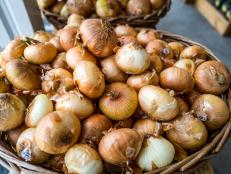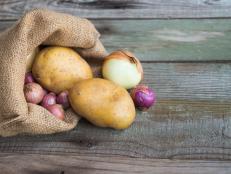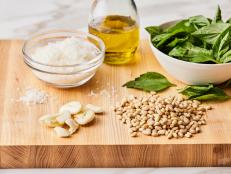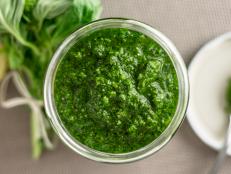Why Ramps Are the Secret Ingredient for Next-Level Pesto
Everyone's about to start freaking out about ramps — here's the most impactful, crowd-pleasing way to use them.


skarau
When ramps are in season April through June, chances are you’ll see them on a restaurant menu. Or at your local farmer’s market. Or written up on your favorite food website (hello!). People go gaga over the wild onions (which look like scallions with a small round white bulb) because their season is short, they’re a quintessential sign of spring and they pack potent oniony-garlic flavor.
You might have heard that you should just grill them or sauté them whole or chop them up and eat them raw. But if you’re new-ish to ramps, putting them into pesto is quite possibly the easiest, most impactful thing you can do. Here’s why.

Trevor Baca Adams/Getty Images
You’ll start with a dish that’s familiar and comforting (pesto) and, in just two seconds, transform it by adding ramps instead of basil (or at least some of the basil). The end result looks like regular pesto and tastes like it — but with more flavor. The peppery garlic and tang that normally falls to the background in basil pesto is amped up. Ramp pesto tastes like basil pesto living its best life, with a more perfectly seasoned, bold flavor that’ll remain present even when combined with starchy pasta or grains.
Let’s take a look at one of Food Network Kitchen’s classic pesto recipes. It calls for two cups of basil. To try out a ramp version, simply swap out 1 cup of basil for 1 cup of roughly chopped ramps — leaves and stems. Start making the pesto by chopping up the ramps in the food processor with the nuts, then proceed to the other steps. Some recipes will tell you to blanch and shock the ramp leaves in boiling water before adding them to the pesto, and you can do that if you’d like — it simply makes for a brighter green pesto.
Store your ramp pesto in the refrigerator in an airtight container for up to five days or in the freezer for up to three months. Because ramp pesto is so special, it also makes a fantastic gift. In the past, I’ve packaged it up in a mason jar, slapped a cute label on it with some neat handwriting, and drawn a quick picture of a ramp on the metal lid with a sharpie. Perfect housewarming gift or Mother’s Day gift. You’re welcome.
Related Links:

































